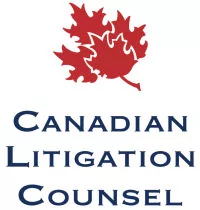Case citation: Howse v Calgary (City), 2022 ABQB 551, Howse v Calgary (City), 2023 ABCA 379
Before municipalities adopted statutory plans and land use bylaws, restrictive covenants were relied on mainly by developers and landowners to inform and control land development. Such private contracts are most commonly found registered on title to inner-city parcels first developed in the 1950s. As urban living evolves and regeneration strategies encourage the conversion of primarily single-family living to multi-use structures, a friction is brewing.
This rise in conflict between private covenants and public policies has resulted in Court intervention becoming increasingly necessary. Decisions from our Courts on this conflict, such as the recent Alberta Court of Appeal decision in Howse v Calgary (Calgary), provide valuable guidance to municipalities on the hierarchy between planning legislation and certain antiquated covenants and the steps that can be taken to ensure that historical neighbourhoods are able to evolve in line with demands for vibrant and sustainable communities.
What is a Restrictive Covenant?
A restrictive covenant is a private contract that, like zoning bylaws, is used to control land use. Where a restrictive covenant complies with both common law and statutory conditions, it becomes capable of "running with the lands" to bind future owners, even where public planning policies might allow for expanded use. In the residential context, a restrictive covenant may have historically been used to preserve a particular character of a neighbourhood and to attract a uniform class of purchasers. Restrictions in this context can include forbidding commercial use within a residential area and regulating the nature or quality of construction of residential structures. In the commercial context, restrictive covenants are oftentimes used to quell competition.
A Strong Force To Be Reckoned With
A restrictive covenant is a valuable tool not only because of the broad purposes for which it can be put, but also in its binding force. In residential neighbourhoods, the same covenant might be registered against title to dozens, if not hundreds, of parcels of land, allowing it to be relied on and enforced by any number of landowners within a planned community. Practically, what this means is that unless and until every single owner agrees to discharge the covenant (oftentimes a herculean task) or unless otherwise ordered by a Court, any and all of the covenants which are negative or restrictive in nature will bind the applicable lands forever.
The Brewing Conflict
When restrictive covenants are first registered, the likely intent is that the land use controls imposed will apply in perpetuity. Practically, however, as title changes hands and the desires of a community evolve, a restrictive covenant may not longer provide the benefit that original landowners wished to preserve. At the same time, urban growth and shifting demographic patterns may begin to demand redevelopment strategies that bring multiple uses together to form new diverse and vibrant neighbourhoods.
The friction we are most often seeing is where historical neighbourhoods are in close proximity to transit and desirable commercial activity. In these areas, historical covenants that restrict use are in direct conflict with pubic efforts to encourage densification. For some landowners, a historical covenant reflects their desire to preserve the quaint neighbourhood they bought into, but for others, the powerful nature of these restrictive covenants prevents redevelopment in high-demand areas.
Challenging The Private Covenant
Given the durable and binding nature of restrictive covenants, most jurisdictions in Canada have developed legislation that allows a person to apply to the Court to remove or alter a covenant. In Alberta, Section 48(4) of the Land Titles Act allows for a restrictive covenant to be modified or discharged if:
- the modification will be beneficial to the persons principally interested in the enforcement of the condition or covenant; or
- the condition or covenant conflicts with the provisions of a land use bylaw or statutory plan under Part 17 of the Municipal Government Act;
AND the modification or discharge is in the public interest.
On the second ground, the requirement for a "conflict" has been interpreted very strictly by Alberta Courts. That is, a true conflict will only be found when compliance with mandatory requirements in a land use bylaw or statutory plan necessitates non-compliance with the covenant.
At common law, an otherwise valid restrictive covenant can also be deemed unenforceable if a Court were to find that the character of the neighbourhood has changed significantly after the imposition of the covenant or where the owners of the benefitting properties have generally accepted numerous violations of the covenant, such that the original objectives of the building scheme have been defeated. A covenant might also become "spent, obsolete or unworkable". Further, a Court might decline to enforce a covenant if its enforcement is seen as vexatious.
Howse v. Calgary: A Battle For Banff Trail
The above principles and legislative scheme were most recently addressed by the Alberta Court of King's Bench in Howse v Calgary (City), 2022 ABQB 551. In December 2023, the decision was confirmed by the Alberta Court of Appeal. The Howse matter involved attempts to redevelop a historical residential neighbourhood in Calgary in the face of a restrictive covenant that only allowed for the construction of single-family homes.
Banff Trail is an inner-city residential area that is highly sought after given its close proximity to the LRT, the University of Calgary, SAIT, McMahon Stadium and Foothills Hospital. When the area was first established in the 1950s, the City registered a restrictive covenant (the "RC") on the southern half of the community in order to ensure that only single-family homes would be built. Eventually, however, the City's development vision for the area evolved and by 1986, the City started to examine the densification options for the neighbourhood. In 2017, after numerous studies, planning committee recommendations, public hearings and investment in public infrastructure, a new Area Redevelopment Plan (ARP) was established for Banff Trail that encouraged higher density development in key locations such as along main streets, and at significant intersections.
The new plan resulted in various developers applying for permits to build high-density structures in the southern part of Banff Trail, in breach of the RC. As the RC was registered against various lots, all landowners bound by the RC were required to consent to its discharge. As is common with most covenants, many landowners refused because they strongly objected to attempts to densify the area. Eventually, the City, at the request of the developers, passed direct control bylaws that restricted discretionary uses, imposed minimum density requirements on certain key development areas and specifically prohibited the development of lower-density single-detached homes.
With the new direct control zoning in hand, developers applied to the Court to have the RC discharged pursuant to s. 48(4) of the Land Titles Act. The developers argued that because the RC conflicted with the direct control bylaw, the second criterion of s. 48(4) was satisfied. The objecting landowners argued that the direct control bylaws were invalid because the City had no legislative basis for enacting the bylaws and they were enacted for an improper purpose and/or in bad faith. Ultimately, the chambers judge found that the direct control bylaws were valid as they were enacted to advance the City's long-term plans and goals for the Banff Trail area, a proper purpose as contemplated by the Municipal Government Act. It was also held that there was no basis to challenge the bylaws on procedural grounds. As the planning policies were deemed valid, the Court then had to determine if there was a sufficient conflict to support a court-ordered discharge of the RC pursuant to S. 48(4) of the Land Titles Act.
In assessing the conflict requirement, the chambers judge found that the ARP alone did not create a sufficient conflict with the RC to satisfy the requirements of s. 48(4). This was because the provisions in the ARP on densification were not obligatory and the language was "permissive rather than mandatory"; therefore, it was not "impossible" for the RC and the ARP to be read compatibly.
Regarding the lands that were also subject to the direct control bylaws, the chambers judge found there was a clear conflict between the requirements of the bylaws and the RC because it was impossible to comply with both. The bylaws required a minimum density that exceeded the maximum density permitted under the RC and therefore, "compliance with one necessarily entailed non-compliance with the other." As a result, the chambers judge ordered a discharge of the RC from only those parcels affected by the direct control bylaws.
The landowners appealed the decision of the chambers judge. The Court of Appeal declined to interfere with the lower Court's decision.
Key Takeaways
The decision in Howse v. Calgary is consistent with previous decisions where "conflict" under s. 48(4) has been interpreted very strictly by Alberta Courts. What this decision may signal, however, is the attention that municipalities are putting on such private covenants, and the ways in which municipal councils can exercise their authority to ensure that long-term goals for redevelopment and revitalization are not impeded by antiquated covenants that conflict with public planning objectives. While it was argued by the landowners in Howse that the sole purpose of the direct control bylaw was improper because it only benefitted developers by creating a clear conflict as required by s. 48(4) of the Land Titles Act, neither Court accepted that argument. It is clear from both decisions that a few key factors supported the finding that the direct control bylaws were validly passed for proper planning purposes:
- Sufficient Balancing of Rights - there was evidence that Council was fully aware of the various rights and interests at play between private landowners and long-term public interests. It was held that Council's balancing of those rights and interests was reasonable.
- Bylaws Reflected Long-Term Goals for the Area - redevelopment of the Banff Trail neighbourhood and encouraging densification had clearly been the City's goal for 35 years. These goals were reflected in both the ARP that was passed by Council as well as the re-districting of certain parcels to allow for a mix of residential and commercial uses in the vicinity of major adjacent amenities like the LRT. The Court held that the bylaws "effected the will of Council" and were passed to "further Council's stated objectives."
The decision in Howse is consistent with the principle that municipalities clearly have broad legislative authority to direct land development and encourage redevelopment; however, not all public policy decisions are guaranteed to automatically override private covenants. As with most planning decisions, innovative efforts to avoid historical covenants will not necessarily withstand challenge unless such efforts are fully supported by proper planning purposes and reflect a sufficient balancing of private rights and long-term public interests. If your municipality is facing a situation where a private covenant is preventing revitalization efforts, we recommend seeking legal advice to ensure that all of the potential options and strategies are explored.
* * *
Brownlee LLP is a member of the Canadian Litigation Counsel, a nationwide affiliation of independent law firms .
The content of this article is intended to provide a general guide to the subject matter. Specialist advice should be sought about your specific circumstances.

